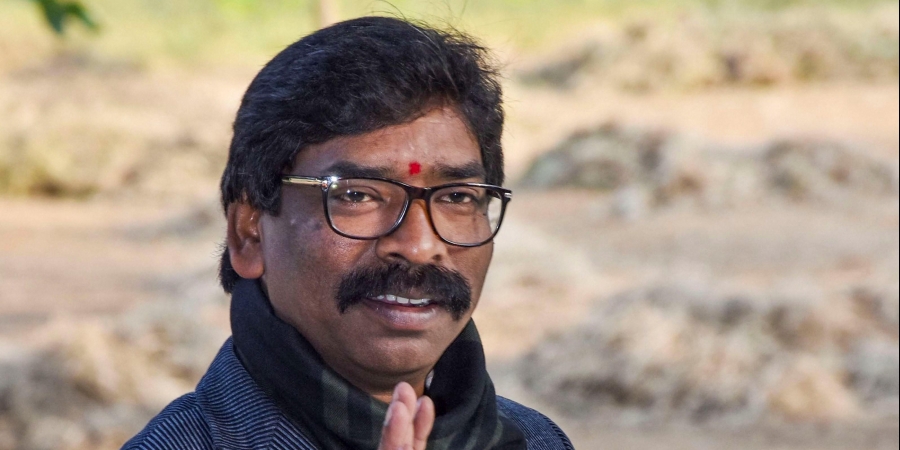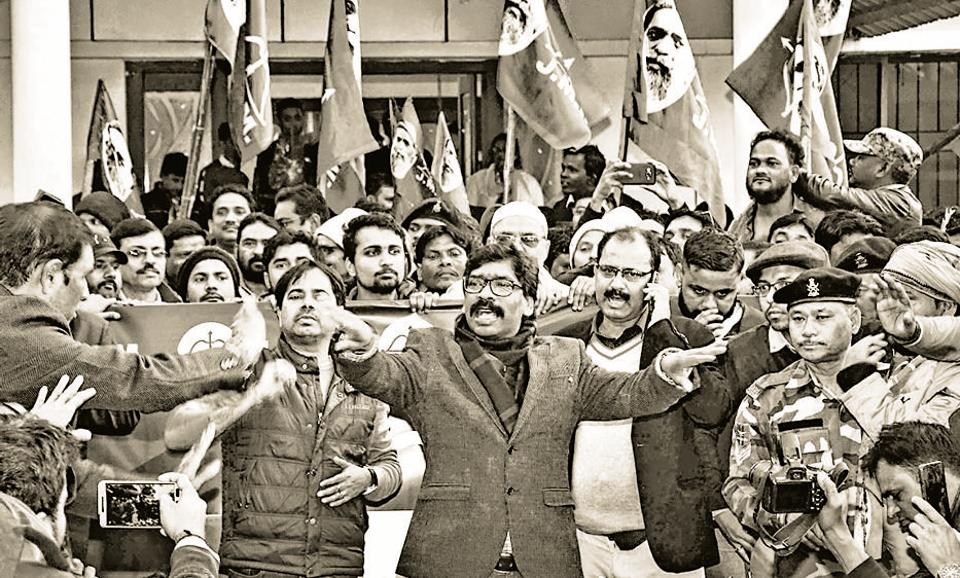Source – hindustantimes.com
Interpreting state election results is fraught with risk, as analysts combine explanations that rarely point in the same direction. The data suggests that state elections are fought and won on local lines, and that recognisable regional leadership can put a challenge to national political figures, as has happened in many of the recent assembly elections. At the same time, analysts try to interpret the meaning of the outcome in the larger political framework — national politics or the next state election.
In the recently concluded election in Jharkhand, the Bharatiya Janata Party (BJP) and the Mahagathbandan (MGB) of the Jharkhand Mukti Morcha, the Rashtriya Janata Party and the Congress have similar vote shares — 33.4% for the BJP and 32.6% for the MGB. But the margin suggests that the latter’s victory could easily have been a landslide but for a few thousand votes. Sixteen Members of Legislative Assembly have been elected with margins of less than 5%, nine of them from the BJP.
The MGB’s advantage lay in the tribal belts, where the JMM won 16 seats and the Congress six, against the BJP’s two. Participation was also higher in these areas, particularly the Santhal Parganas Division and the Kolhan Division, which the MGB swept. It’s proof that the alliance successfully channelised voters’ discontent with the incumbent’s performance. Given the relatively small size of the assembly — 81 seats — local and subregional dynamics are more likely to have had an impact on the outcome, more so than in larger states where those effects tend to be more diluted.
Another factor that played in favour of the alliance is the BJP’s decision to go alone in the polls. Its erstwhile partner, the All Jharkhand Students Union (AJSU), cost the party the vote share it needed to stay ahead. The AJSU’s effort to mobilise the Other Backward Castes — the Kurmis in particular — considerably harmed the BJP, particularly in central Jharkhand, where the Congress performed well even in urban seats.
In retrospect, the decision to go alone proved fatal for a BJP led by an unpopular chief minister. Jharkhand’s history, with no party ever winning a majority in the House since the creation of the state, should have informed the party of the uphill task. The cumulative vote share of the main contenders — the BJP, Congress and JMM — over the past four elections has been 49.9% in 2005, 51.6% in 2009, 62% in 2014 and 68.7% in 2019, respectively. Even though the vote share of the main contenders is steadily going up, it still leaves one out of three voters not opting for any of the major contenders. It signifies the importance of local factors as well as local political forces.
Among the national parties, the Jharkhand success shows the Congress that it pays off to assume the role of junior partner in a pre-electoral alliance. Its candidates underperformed compared to the JMM candidates, particularly when in direct contest with the BJP. The Congress had a difficult task against the BJP in urban and general seats, but contesting fewer seats compensated for its comparative weakness of having no visible leadership. It left the stage to Hemant Soren, who was projected as the chief ministerial candidate. The Jharkhand results may lead the party to reconsider its alliance strategies in upcoming elections in Delhi and Bihar.read more
For the BJP, this is an opportunity to rethink its strategy in state elections. Though one can argue that the party has maintained its vote share, the Jharkhand result is a setback, particularly when some of its national policies are backfiring and the economy continues to be weak. Even if there is no clear impact of the current national controversies in the Jharkhand election, the fact that the BJP campaigned exactly on those issues and lost shows these issues have little endorsement at the regional level. They don’t seem to compensate for the state government’s lacklustre performance.
The BJP’s post-2014 winning spree in state polls created an image of the party’s dominance, if not hegemony. The results of the last six state elections show that while the BJP uses its strengths to make inroads in new political spaces, it is unable to use the same cards to retain power. This will have far-reaching consequences for the BJP at the Centre, which will become increasingly dependent on non-BJP states to implement its policies. Many chief ministers — including within the National Democratic Alliance — going back on the National Register of Citizens is one of the first examples of future hurdles.
In such a situation, the BJP is left with only two options. Either it tightens its grip on the organisation and centralises powers further, including pushing on levers against state governments. Or it gives some leeway to its state organisations and regional leaders, and lets them lead the fight on local or regional terms. One can, though, argue that the BJP normally doesn’t let its grip go on its regional structure. The alternative would be the route chosen by Indira Gandhi, who, faced with mounting challenges from the states, both from within and outside her party, concentrated powers further to the point of rupture with democratic norms.

